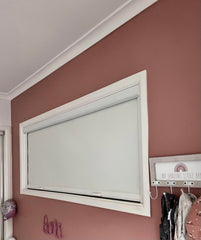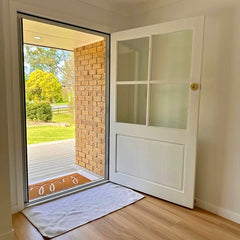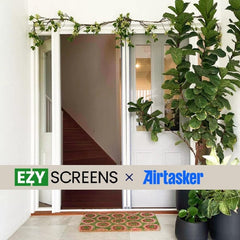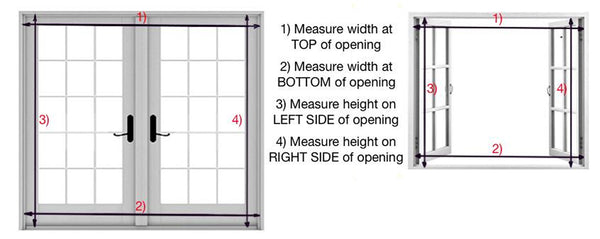If you’ve ever tried to sleep past sunrise, watch a movie without glare, or keep your home cool on a scorching afternoon, you’ll know why block-out blinds are such a popular choice. But picking the right one can make a big difference to your comfort, energy bills, and even your home’s style.
Keep reading as we walk you through what makes a good block-out blind, the best types and fabrics to choose from, and how to find the perfect fit for your space.
What Does “Block-out” Really Mean?
When a blind is labelled “block-out,” it means the fabric is designed to stop light completely. Unlike dim-out or translucent fabrics, blockout fabrics are opaque, often layered or coated, and leave rooms as dark as possible when properly installed.
Blockout blinds are ideal when you need full privacy, darkness, and a barrier against heat and UV rays.
Popular Types of Block-out Blinds
Roller Block-out Blinds
The classic choice. Roller block-out blinds are simple, stylish, and easy to use. Just roll them up or down as needed. They’re available in a wide range of fabrics, from basic PVC to soft, textured textiles, and they fit seamlessly into almost any décor.
Dual Roller (Day/Night) Systems
For those who want flexibility, dual roller blinds combine a sheer or translucent blind with a block-out blind on the same window. During the day, you can lower the sheer layer to let soft light in while maintaining privacy, then switch to the block-out at night.
Honeycomb and Pleated Designs
Looking for something with a bit of texture and extra insulation? Honeycomb (or cellular) blinds and pleated blinds are excellent options. The layered structure of honeycomb blinds traps air, adding a thermal barrier that helps keep rooms warm in winter and cool in summer.
Best Fabrics for Light Blockage
PVC and vinyl-coated
PVC and vinyl-coated fabrics are durable, easy to clean, and excellent at resisting UV rays and moisture. They’re particularly good for kitchens, bathrooms, or anywhere the blinds may be exposed to humidity or direct sunlight.
Polyester and Composite Blends
Polyester-based fabrics are lightweight, versatile, and often made with eco-friendly components. They tend to have a softer texture than PVC and come in a variety of finishes, great for adding a touch of elegance without sacrificing functionality.
Premium and Designer Options
If you’re after something that looks as good as it performs, premium block-out fabrics are worth considering. These often feature designer patterns, luxury textures, or layered compositions that add depth and style to your space while still delivering complete light control.
How to Choose the Right Blind for Your Room
Bedrooms and Media Rooms
For spaces where darkness is crucial, you can’t beat a 100% block-out blind with side channels or a pelmet to minimise light leaks. Look for thick fabrics and snug fits for the best results.
Living Rooms and Offices
Here, you might want to balance functionality with design. Dual roller blinds are a great pick if you need both light and privacy at different times of day, or opt for a textured fabric to complement your décor.
Family Homes with Kids or Pets
Safety and durability are key if you’ve got little ones or furry friends running around. Cordless or wand-operated blinds (or even motorised options) reduce the risk of accidents and make them easier to operate.
Best Block-out Blind to Buy in Australia
Top Pick – Retractable Block-out Screen
For a modern, space-saving solution, a retractable blockout screen is hard to beat. Designed for large windows or doors, it combines the sleek appeal of a roller blind with a neat retractable mechanism. When you don’t need it, it disappears into its housing.
Off-the-Shelf vs Custom Made
If you’re on a budget or need something fast, off-the-shelf options are convenient and affordable, but they may not fit perfectly. This can lead to gaps and reduced effectiveness.
Custom-made blinds, on the other hand, are tailored to your windows, ensuring a snug fit and professional finish. They do cost more upfront but are worth it if you’re looking for a flawless result.
Installation Tips and Maintenance
DIY vs Professional Install
If you’re handy with a tape measure and a drill, DIY installation is definitely doable. Just make sure to measure carefully (twice!) and follow the instructions. For trickier windows, unusually shaped spaces, or if you want the best finish, hiring a professional can save time and hassle.
Cleaning and Care Tips
Blockout blinds are generally low-maintenance, but regular care helps them last longer. Dust them lightly every few weeks, and for stubborn marks, use a damp cloth and mild detergent. Avoid harsh chemicals or scrubbing, which can damage the fabric or coating.
What Will It Cost?
Blockout blinds vary widely in price, depending on material, size, and whether you choose off-the-shelf or custom-made.
-
Budget roller blinds: around $50–$150 per window
-
Custom-made roller blinds: $200–$600+ per window
-
Dual roller blinds: $300–$800+ per window
-
Honeycomb blinds: $300–$1000+ per window
Professional installation can add about $100–$300 per room, but many homeowners find the long-term comfort and energy savings make the investment worthwhile.
Final Recommendations
If you’re after the best block-out blind for a bedroom or media room, go for a custom-fitted roller or honeycomb blind with side channels for full darkness and insulation. For family homes, cordless or motorised blinds are ideal for safety and convenience.
And if you want luxury and design appeal, premium fabrics or a retractable block-out screen will give you high performance with a touch of sophistication.
FAQs
Do block-out blinds completely darken a room?
Yes. If installed with minimal gaps, they can achieve near-total darkness, ideal for bedrooms or home theatres.
Can block-out blinds help reduce energy bills?
Yes, their insulating properties can help maintain room temperature, reducing heating and cooling costs.
Are block-out blinds safe for children?
Yes. Look for cordless designs or motorised versions to avoid safety hazards with cords.
What rooms benefit most from block-out blinds?
They’re perfect for bedrooms, nurseries, offices, and media rooms where darkness and privacy are essential.







